US Sailing Report
REPORT ON INQUIRY BY US SAILING INTO THE PERSON OVERBOARD INCIDENT ON THE YACHT MORGAN OF MARIETTA IN THE 2022 NEWPORT-BERMUDA RACE
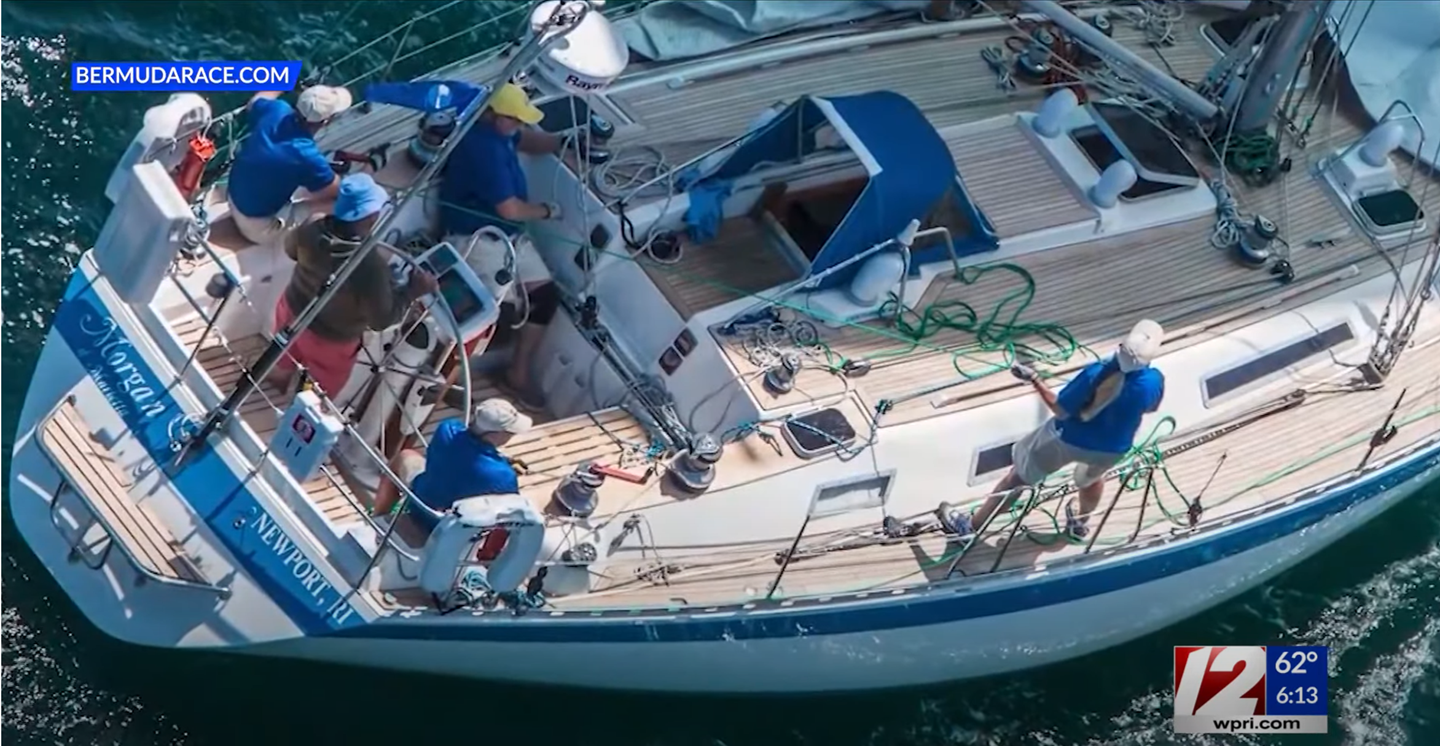
The 52nd Annual Newport to Bermuda Race (“Race”) started off Newport, Rhode Island on June 17, 2022. The yacht Morgan of Marietta (“MOM”), a Centurion 42, competed in the Race. Colin Golder (“Colin”), of New Providence, New Jersey, owned and skippered the boat. Colin went overboard on the afternoon of Sunday, June 19, 2022. He was not wearing a harness with tether nor a personal flotation device that complied with the Race’s safety requirements (hereinafter “PFD”). The crew of MOM executed man overboard procedures, quickly returned to Golder, and connected him to the boat via a Lifesling. While connected to the Lifesling, Colin lost consciousness and died soon thereafter. The crew of MOM had great difficulty in pulling Colin’s unconscious body back aboard, but finally did so. Once they recovered Colin’s body, the crew returned MOM to its home port in New Jersey.
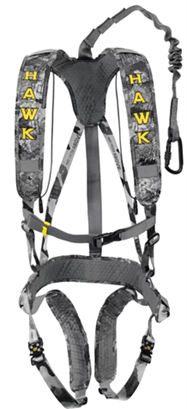
The Cruising Club of America and the Royal Bermuda Yacht Club requested that US Sailing conduct a review of this incident and provide a report and recommendations aimed at enhancing the safety of offshore racing. To that end, US Sailing appointed a panel of six sailors to review the 2 incident, establish what happened, and make recommendations to reduce the likelihood of a future similar incident1:
- Greg Miarecki (Chair) (Chicago Yacht Club)
- Ed Cesare (Storm Trysail Club)
- Andrew Clouston (SVP Programs and Services, US Sailing)
- Les Crane (Royal Bermuda Yacht Club)
- Matt Gallagher (Offshore and Technology Division Chair, US Sailing)
- Jonathan Kabak (CEO, Oliver Hazard Perry Rhode Island)
The panel interviewed all surviving members of the MOM crew, as well as Sabina Golder, Colin’s wife. It reviewed MOM’s Expedition logs and YB Tracking record, as well as Race documentation kept aboard the boat. It consulted with experts in the fields of medicine, navigation, and weather forecasting. This Report aims to summarize what occurred in this incident, outline our findings, and provide lessons learned for the sailing community.

Part I provides a factual summary of events. Part II outlines key conclusions stemming from these facts. Part III offers lessons learned and recommendations aimed at making offshore sailing a safer sport for all who participate in it. Broadly, we found that the key contributing cause to Colin’s death was his failure to wear a PFD, harness, and tether. Given the circumstances, his crew acted properly in connection with the subsequent man overboard procedure.
I. FACTUAL SUMMARY
MOM started the Race on June 17, 2022. Colin owned and skippered the boat. Colin was an experienced offshore racing sailor, having competed in approximately ten prior Newport to Bermuda Races. Colin was joined by seven other crew members:
- Sara Burke
- Johan Blok
- Rob Douglas
- Shawn Edmonds
- Ann Myer
- Anne Popolizio
- Lou Rugulo
Two of the crew members were new to MOM, and the others had sailed on the boat previously to varying degrees. Colin was very involved in preparing the boat for the Race. In terms of actively managing the boat during the Race, Colin relied heavily on his crew. As of the date of the race, Colin was 74 years of age and overweight (estimates of his weight were 250-300 pounds at a height of 5 foot, 9 inches). He rarely, if ever, went outside of the cockpit while racing.
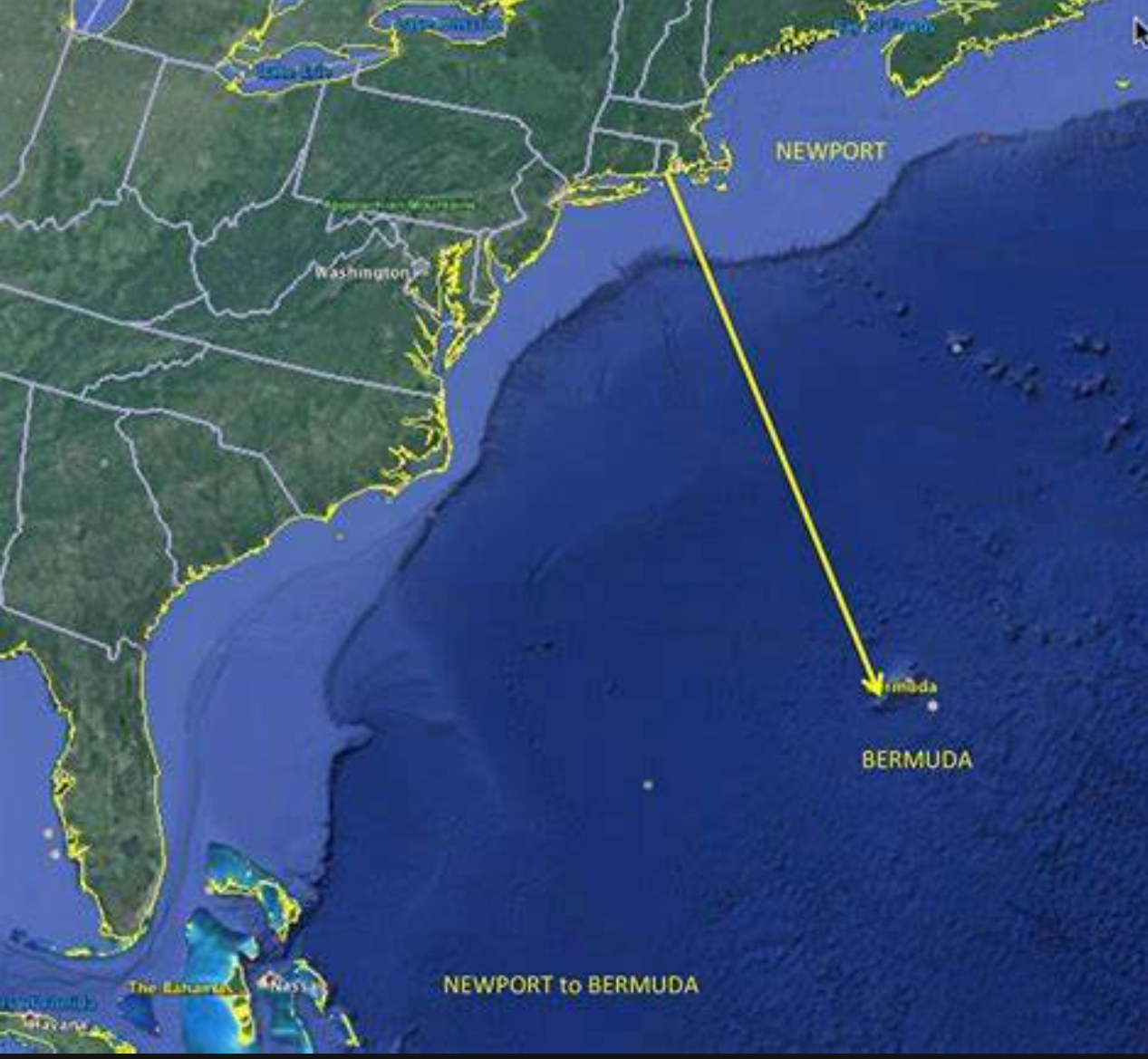
At the start of the Race, MOM was sailing in approximately 15-20 knots of wind out of the southwest. MOM got pushed over the starting line early and had to circle the Race Committee boat and start thereafter. Lou Rugulo, MOM’s navigator, advised the crew at the start that they should expect winds in the 20-25 knot range, with possible higher gusts, during the Race. Between the start of the Race and Sunday afternoon, MOM raced towards Bermuda without incident. Colin divided the crew into two watches: 1) Colin, Rob Douglas, Anne Popolizio, and Shawn Edmonds; and 2) Sara Burke, Ann Myer, Johan Blok, and Lou Rugulo. By all accounts, the watch system functioned smoothly, with all crew members getting a reasonable amount of nutrition and rest during the first 40 hours of the Race. MOM’s watch system called for four-hour watches during the daytime and three-hour watches at night.
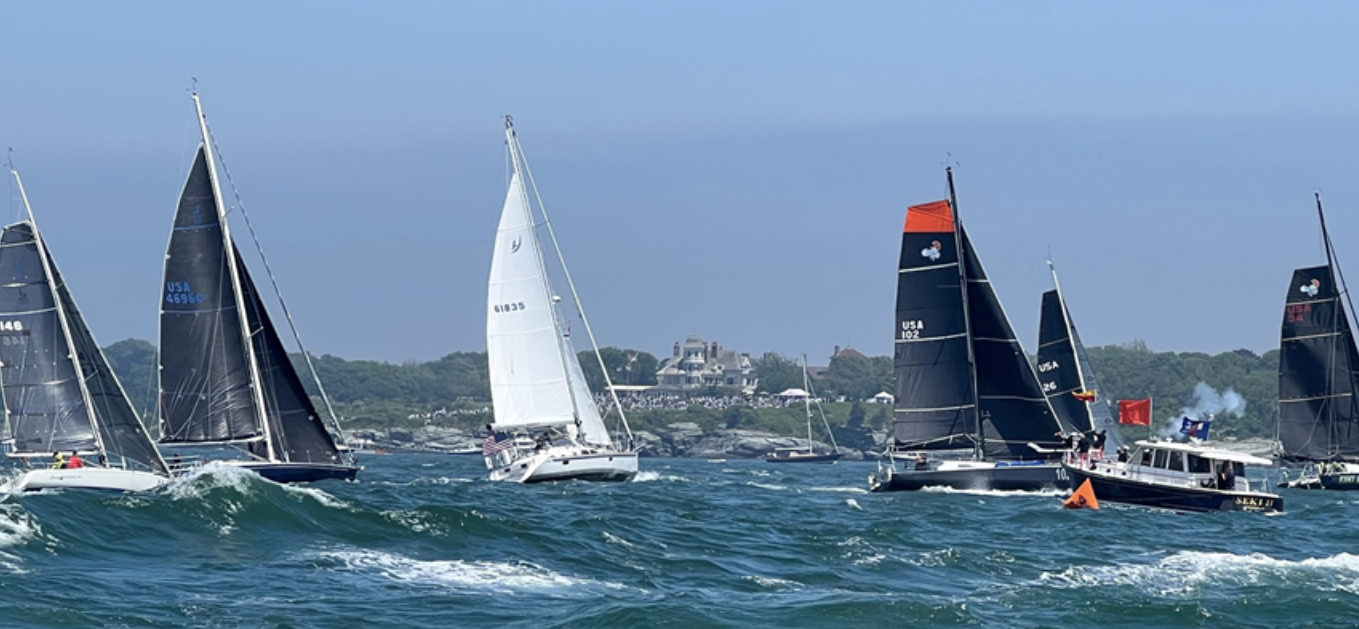
At 1100 EDT on Sunday, Colin came on watch with Douglas, Popolizio, and Edmonds. By this time, Colin had gotten to know Douglas’ boat handling skills and had been deferring to Douglas on boat handling. At this point, MOM was sailing on starboard tack at a wind angle of about 95- 130 degrees true (according to the boat’s Expedition data) under a full main and No. 3 genoa, with winds at approximately 290-330 degrees true. Boat heading was generally between 160 and 190 degrees. According to the boat’s Expedition data, wind speeds were consistently in the low to mid 20s, with some higher gusts3. Crew members report a sea state with waves consistently in the ten- foot range, with some higher waves of 12 to 18 feet.4 According to the boat’s Expedition data, the water temperature was 23 degrees Celsius (73 degrees Fahrenheit), with boat speeds of 8 to 10 knots (and some higher speeds as the boat rolled down the swells.) Heel angles, on average, were around 15 degrees. The boat was reportedly well-balanced, with a manageable degree of helm. The crew switched drivers every 30 minutes to keep a fresh hand on the helm.
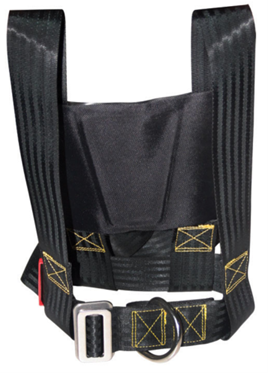
At approximately 1215 EDT, Douglas was at the helm of MOM. Colin was seated in the cockpit on the starboard side, forward. Popolizio was seated behind him on the starboard side, and Edmonds was sitting to leeward. Douglas, Popolizio and Edmonds were all wearing PFDs and were clipped in using their tethers. According to many members of the crew, it was standard operating procedure for MOM crew members to wear PFDs, harnesses, and tethers at night and in conditions like those described above. Indeed, based on a photo of MOM at the start of the Race, Colin was wearing a PFD at the start of the Race.
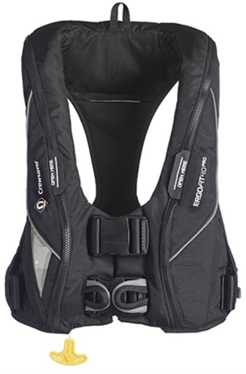
Despite these unwritten standards, Colin was not wearing a PFD and was not clipped in at the time of the incident. He was wearing a pair of salopettes, an offshore foul weather jacket, and sneakers. At approximately 1225 EDT, a large wave hit MOM. The wave washed over the crew, easily burying MOM’s rail. Edmonds was tethered to the boat on the leeward side. He reportedly got hit by the wave and “had the impression of being underwater” for a period of time. This was a different type of wave from the typical spray that the crew experienced in the time leading up to the incident.5 According to multiple crew accounts, this wave washed Colin over the top of the leeward lifelines and into the water. According to the Expedition log on the boat’s computer, the heel angle 5 at this time hit 49.42 degrees. Speed over ground during these few seconds was recorded at 15 knots and 18.8 knots.
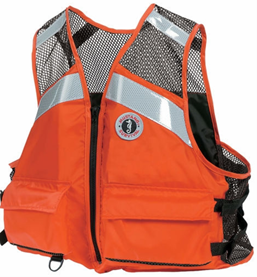
With Colin overboard, the crew quickly initiated a person overboard (“POB”) response. Douglas assigned Popolizio the role of being the spotter, and she maintained eye contact with Colin in the water. Douglas called out that a man was overboard to the watch below. Popolizio hit the POB button on MOM’s Raymarine chart plotter, located on the steering pedestal. Edmonds readied the Lifesling on the port side, and also served as a spotter for Colin. Edmonds kept his eyes on Colin from the time he realized Colin had fallen overboard until he was reconnected to the boat. Douglas tacked the boat, backwinded both sails, and executed a quickstop maneuver.

Once the off-watch crew were alerted of a POB, they put on PFDs and came up on deck. While no crew member could provide an exact estimate of timing, it appears they were able to do so within a minute or two. Once the off-watch crew came on deck, they threw two Type IV cushions overboard in order to create a debris field. They then dropped the jib, and one of the off-watch crew members started the engine. As the boat returned to Colin, it passed him to windward, Edmonds deployed the Lifesling, Douglas tacked the boat back over and brought the Lifesling around Colin.7 This entire process took four to five minutes from the time Colin was washed overboard. According to crew accounts, the boat never got more than 300 yards away from Colin during this process. Within three minutes of Colin falling overboard, MOM’s recorded speed was between zero and three knots.
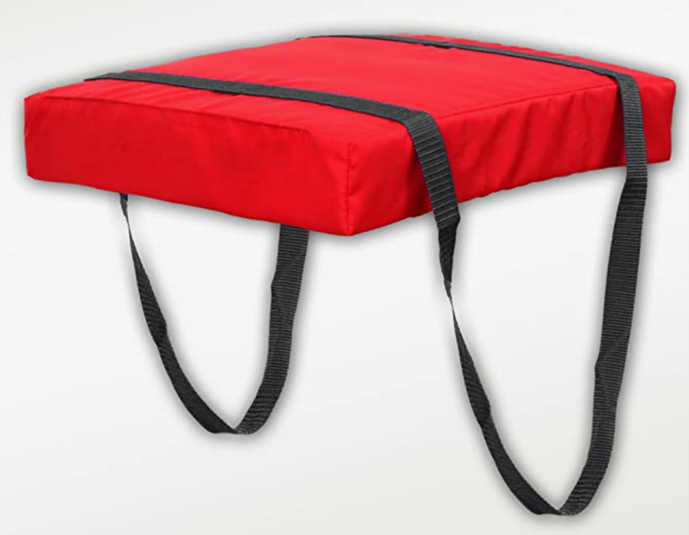
Colin made contact with the Lifesling and was alert at the time he did so. He swam to the Lifesling, proceeded to put the Lifesling on under his arms without any issues. He was not talking at this point, nor did anyone on the crew hear Colin talking after he fell overboard.8 Once Colin was connected to the boat via the Lifesling, Edmonds proceeded to slowly pull him back to the boat and verbally expressed concern for keeping his head up and out of the sea state. Some crew members report being able to make eye contact with him during this time.

Edmonds’ original plan was to bring the Lifesling to mid-ship and bring him back on board. However, during the process of bringing him back to the boat, Colin appeared to lose consciousness and his face went into the water. Edmonds was very concerned about the amount of time Colin’s face was going to be in the water and brought him to the swim platform in order to get Colin’s face out of the water as soon as possible. Multiple crew members stood on the platform and raised Colin’s head out of the water as they attached MOM’s jib halyard to the Lifesling. At this point, Colin’s skin was blue, and he was unresponsive. While trying to raise Colin’s body on the jib halyard, the halyard chafed aggressively and began to shred. Eventually, Colin slid out of the Lifesling, and crew members were unable to retain a grasp of him. He was floating face down near the boat and believed by the crew to be dead at this point.

The crew of MOM then attempted to seek help from others outside the boat. They initially had some trouble unlocking the boat’s Iridium GO system because it was paired with Colin’s cell phone, and they did not have the unlock code. They contacted other competitors via radio, who helped establish a relay to the United States Coast Guard. (Eventually, the crew was able to unlock the Iridium GO system and begin using it.) Through this relay, the crew of MOM understood that a helicopter was being dispatched to assist. MOM circled Colin’s body, awaiting assistance from the Coast Guard. Approximately an hour later, the crew learned that the Coast Guard would not be coming, and they renewed their efforts to retrieve Colin’s body from the ocean.

The crew found the Lifesling ineffective because Colin was unconscious and unable to maintain his position in the device. The crew tried to use a drogue, wrapping it around him and pulling it up. This failed. Next, the crew tried to hoist Colin’s body using the straps of his salopettes. This also failed. Finally, after at least two hours of effort, the crew secured lines around various parts of Colin’s body, and using the main halyard, hauled the body on deck.
The crew zipped Colin’s body into MOM’s No. 3 genoa bag, lashed it to the rail, and began heading for the boat’s home port of Perth Amboy, New Jersey. At this point, the crew had been able to make contact with Sabina Golder, who asked the crew to deliver the boat to Perth Amboy. Douglas served as de facto skipper during the delivery. MOM and her crew returned to port on Wednesday at approximately 1600. The boat was met at the dock by the local police department and coroner, as well as several US Customs officials.
According to the medical examiner’s report, the cause of Colin’s death was “drowning.” This panel consulted with an independent medical expert, Dr. Jo Larkin, who supported this conclusion.
KEY CONCLUSIONS
1. The conditions existing at the time of the incident clearly warranted use of a PFD combined with a harness and tether, and to be clipped in while on deck. Indeed, Colin’s fellow watch members were equipped in this manner. Some were even “double tethered” to keep themselves as close as possible to the boat.
2. Colin’s failure to wear/use a PFD, harness, and tether proximately caused the POB incident, and ultimately, his death. Colin’s crew did not press him to wear a PFD, harness, and tether in these conditions. Had Colin been wearing a PFD, harness, and tether, it is highly unlikely that he would have been washed overboard.
3. The evidence suggests that Colin died due to drowning. This is the conclusion reached in the medical report provided – a conclusion that was confirmed by Dr. Larkin. Some crew members speculated that Colin died of some other sudden cause, pointing to the fact that he appeared to be alert and was making eye contact with the crew. Dr. Larkin advised that the process of drowning is “gradual,” and that such reactions are not inconsistent with a drowning diagnosis.9
4. The crew of MOM properly executed man overboard procedures and reconnected Colin to the boat within four to five minutes, never losing sight of Colin. Their efforts in this regard are impressive, especially given the conditions.
5. The crew of MOM experienced great difficulty in recovering Colin’s body. Recovering an unconscious body absent a PFD and harness, particularly given Colin’s physical stature and the conditions existing at the time of the incident, would have been extraordinarily difficult for any crew.
RECOMMENDATIONS
As stated above, we find that the crew of MOM acted properly with respect to the recovery of Colin’s body, given the difficult circumstances that existed. We commend them for the skill and bravery that they demonstrated. We believe that the offshore sailing community can learn many lessons from this incident and offer the recommendations below toward that end.
A. Wearing of PFDs, harnesses, and tethers — Sailors should wear PFDs, harnesses, and tethers when on deck in inclement weather and when conditions otherwise warrant. We believe this incident would not have occurred had Colin been wearing a PFD, harness, and tether, and was in fact tethered to the boat. Stating the obvious: If you fall overboard while sailing offshore, your chance of death increases dramatically. Staying attached to the boat is critical to minimizing this risk.
B. Responsibility of all crew members to ensure compliance with safety requirements — It is often said that wearing such equipment is a “personal decision.” We disagree. Any time a person goes overboard, the entire crew is at risk. For that reason, all crew members should be trained to actively promote safety requirements and standards, ensure that all crew members comply with them, and be prepared to challenge each other with respect to safety issues. We recommend that the Safety Equipment Requirements should be expressly rewritten to emphasize that ALL crew members bear responsibility for acknowledging and enforcing requirements associated with good seamanship, and that skippers expressly instruct their crews in this regard. We also believe it would behoove all skippers and crews to engage in strong internal communications concerning safety protocols, including pre-race safety briefings and discussions. See Recommendation J below. We believe these measures would facilitate an added measure of safety aboard any racing yacht.
C. Lifesling training — The crew of MOM initially used the jib halyard to try and recover Colin even though the recovery was being executed from the transom. (Quite possibly, due to the unresponsive nature of the POB, it was necessary for the recovery crew to be at sea level, making the transom a reasonable choice for a recovery.) However, the exit angle of the jib halyard made it a poor choice in this regard. Choice of the jib halyard may have been influenced by safety at sea demonstrations showing recovery from amidships. Ultimately, the crew moved to the boat’s main halyard for this purpose. Safety at Sea trainers should consider focusing more heavily on lifting POBs back onboard via a Lifesling (including choice of halyard), and to augment such training – whenever possible – to utilize equipment necessary to properly demonstrate such techniques. Additionally, in Safety at Sea training, emphasis should be placed on the need to consider alternative courses of actions under the stress of timing and conditions.
D. Training and equipment concerning unconscious POBs — We recommend that Safety at Sea training be updated to focus more heavily on methods for bringing unconscious POBs aboard and address the possibility that the POB is not wearing a PFD or harness. Further,we would encourage manufacturers of safety equipment to explore enhancements that may improve a crew’s ability to recover an unconscious POB.
E. Additional training on external communications — The crew of MOM experienced some difficulties with communication. Specifically: 1) the boat’s VHF radio was set on low power; 2) the crew had trouble connecting to the boat’s Iridium GO system because Colin’s phone was the key element of that system, and the crew could not access it; and 3) the crew had some difficulties operating the DSC calling feature on the VHF radio and lacked a complete understanding of DSC capabilities. While none of these difficulties materially affected the crew’s ability to bring Colin back aboard alive, we believe Safety at Sea training should be enhanced to focus more heavily on communication methods available on offshore passages, including the performance capabilities of VHF radios, Iridium GO systems, and cellular phones. Additionally, we suggest that race organizers consider requiring or recommending additional training of multiple crew members in this regard, focused on the characteristics of their particular event.
F. Training regarding MOM-8 units — The crew did not deploy the MOM-8 unit, and multiple members of the crew on watch stated that deploying this device did not occur to them. It appears that the crew discussed the use of the device before the race and that Colin mentioned it as a priority. However, deployment of the MOM-8 did not occur to the crew in this admittedly high-pressure (and for a period of time, shorthanded) situation. At least one crew member commented that they had never seen the MOM-8 unit deployed during their Safety at Sea training. This highlights a legitimate challenge within Safety at Sea training regarding the ability to demonstrate equipment that requires professional service after use. Going forward, we suggest that Safety at Sea trainers consider additional ways to demonstrate the value/use of MOM-8 units. While we doubt that use of the MOM-8 device would have changed the outcome in this case, it is clear that the unit was not utilized, perhaps due to lack of familiarity and the opportunity to employ it in a training situation.
G. Training regarding availability of outside rescue assistance — During this incident, it appears that the crew of MOM – for a period of time -- was led to believe that the U.S. Coast Guard would come to their aid. Regardless of what the Coast Guard may have told the crew of MOM, we find it highly unlikely that the Coast Guard would have been of any assistance in this incident, given that MOM was sailing several hundred miles off the east coast of the United States. For this reason, we strongly recommend that all Safety at Sea courses be reviewed and revised to reflect the realities of the Coast Guard’s capabilities in this regard. We also recommend that all race organizers provide specific and realistic guidance to competitors re what to expect in terms of rescue capabilities and emphasize the foundational principle of self-reliance in that guidance.
H. Training regarding rescue swimmers — We recommend that Safety at Sea training be revised to specifically address when, if ever, to send a rescue swimmer into the water. The MOM crew specifically discussed this issue and wisely decided not to send a swimmer into the water given the conditions. However, we believe many crews might have made a different decision, especially given the emotional difficulties of seeing a fellow crew member struggling to live. We believe this topic needs more attention and discussion in our community.
I. Training regarding engine use — We recommend that Safety at Sea training and race organizers’ requirements be updated to include engine starting and use by multiple crewmembers as a required element. In this case, the MOM crew did an outstanding job executing man overboard procedures. But several of the crew were challenged by not being familiar with MOM’s engine. Skippers and crews should work together to ensure that all crew members know how to start a boat’s engine when necessary. This training, review, documentation, and practice of all standard operating procedures on board is particularly important when some sailors are new to the crew or to the boat.
J. Importance of safety briefings — We believe Safety at Sea courses should be enhanced to better explain what kind of safety briefings ought to occur prior to a significant race such as the Newport to Bermuda Race. In this case, there were some newer crew members to the MOM program. A detailed pre-race safety briefing that discusses safety issues in detail might reduce (although not eliminate) the number of future incidents.
K. Appointment of a “second in command” — Generally, our training protocols do not contemplate the skipper falling overboard. In our judgment, our sport does not sufficiently address continuity of leadership should a skipper fall overboard. To that end, we recommend that Safety at Sea training be enhanced to contemplate this possibility, and that race organizers in major offshore events require competitors to identify a “second in command.” In this case, Rob Douglas and Ann Myer were identified as watch captains in the entry paperwork related to the Race, and Douglas emerged as the de facto skipper in Colin’s absence. This latter decision appears to have been organic in nature. It might have been easier for the crew to have sorted this issue out in advance.
L. Identification of crew members with medical training — Crews should endeavor to identify who among them are trained in first aid/medical procedures, especially when a crew has not sailed together in the past. While the crew of MOM acted with great skill, it was not clear that they all had a strong understanding of each other’s capabilities in this regard. Skippers and crews should, together, make sure that they all have a shared understanding of medical capabilities aboard the boat.
CONCLUSION
Colin was washed overboard by a large wave in inclement weather. We believe, ultimately, his death was caused by his failure to wear and deploy his PFD, harness, and tether. His crew acted admirably in returning and reconnecting him to the boat, but it appears that he drowned before they could get him back on the boat. All of us can learn important lessons from this tragedy, and we have tried to offer this relatively simple set of findings and recommendations in the hopes that they will be widely shared and understood by our community, and that they can play a role in making our sport safer for all.
October 15, 2022
Appendix A
Panel Members
Greg Miarecki (Chair) is a member of Chicago Yacht Club and the Storm Trysail Club. He has raced hundreds of distance races in Lake Michigan, including 35 Chicago Yacht Club Races to Mackinac. He served as Chair of the Race in 2008 and 2009, the former being the 100th Race to Mackinac, which attracted over 450 boats to the starting line. Greg served for many years on the Flag and Board of Chicago Yacht Club, including two years as its Commodore in 2015 and 2016. Greg was one of the five founding Commodores of the Chicago Area Sail Racing Association, and currently serves as President of the Chicago Yacht Club Foundation.
Ed Cesare is a financial professional who is also a competitive offshore sailor. He owned and campaigned a Class 40 (doublehanded) and regularly navigates for several high-end programs. In the course of sailing over 100,000 miles offshore, Ed has raced all five of the world’s great 600 milers, including 18 Bermuda Races, as well as three transatlantic races. He serves as Commodore of the Storm Trysail Club, is past Overseas Rear Commodore for the Royal Ocean Racing Club, past Commodore of the Norwalk Yacht Club, and is a Trustee and committee chair for the New York Yacht Club.
Andrew Clouston is US Sailing’s Senior Vice President of Programs and Services and is responsible for offshore, youth and adult programs, competition, education, race administration, and information technology. Andrew brings a great depth of experience from an accomplished background in the sport including thirteen years with Yachting New Zealand, the National Governing Body for sailing in New Zealand, most recently as Chief Operating Officer. Andrew’s former roles also include Nominated Expert and Regional Development Coordinator for World Sailing as well as Maritime New Zealand’s Operations Manager for the 36th America’s Cup. Andrew is a skilled keelboat sailor whose experience includes extensive coastal racing as well as one design, match racing and cruising.
P Leslie Crane is the Past Commodore of the Royal Bermuda Yacht Club (2002-3). He has been a skipper in 7 Newport Bermuda Races and has over 40,000 miles cruising experience including three Atlantic crossings.
Matt Gallagher is chair of the Offshore & Technology Division of US Sailing. Previously, he served as Chair of the US Sailing Offshore Committee and served on the Safety at Sea Committee. Matt was chair of the Chicago Yacht Club Race to Mackinac and has organized numerous local, regional, and world championships in sailing. Matt has skippered in ten Chicago Yacht Club Races to Mackinac and has raced throughout the Great Lakes as well as in the Southeastern US and in Europe. He is a member of the New York Yacht Club, Chicago Yacht Club and Storm Trysail Club and professionally is a lawyer in Chicago.
Captain Jonathan Kabak is the Chief Executive Officer of Oliver Hazard Perry Rhode Island and is the Master of the SSV OLIVER HAZARD PERRY. Jonathan is an internationally recognized expert on maritime training and education under sail. Having sailed in command of vessels ranging from landmark tall ships to high performance racing sailboats, maritime academy training vessels to luxury motor yachts. When not involved in vessel operations, he is sought after as an instructor and curriculum developer, specializing in STCW and Coast Guard approved training for commercial mariners, and as well serving as a Moderator for US Sailing and World Sailing Safety at Sea Seminars. Jonathan serves on the Board of Tall Ships America, where he is the Chairperson of the Ship Operations and Safety Committee.
Consultants
Chris Bedford, CCM, is Founder and Owner of Sailing Weather Service, LLC, a consultancy focused on providing meteorological and oceanographic information to high-level sailing programs. He graduated in 1986 from the University of Michigan with honors in Atmospheric and Oceanic Science. He founded Sailing Weather Service after 10 years experience as an environmental consultant and 2 years as manager at a large commercial weather and forecasting firm. His sailing weather experience is extensive and successful - He is a veteran of 10 America's Cup (4 wins), 5 Volvo Ocean Race/Whitbread (3 Wins), and 6 Olympic campaigns. Chris has consulted on numerous adventure sailing and aviation records. Chris was awarded the Certified Consulting Meteorologist classification from the American Meteorological Society in 1994. In 2004, he received the US Sailing President’s Trophy for his work with the US Sailing Team at the Summer Olympic Games.
Stan Honey, as professional sailing navigator, has won the Volvo Ocean Race around the world, set the Jules Verne record for the fastest non-stop circumnavigation of the world, and set multiple 24 hour, Trans-Atlantic, Trans-Pacific, Sydney-Hobart, and Newport-Bermuda sailing records. In 2010, Honey was awarded the US Sailing Yachtsman of the Year Award and was inducted into the National Sailing Hall of Fame in 2012. Honey is a Yale/Stanford electrical engineer, three-time Emmy Winner for Technical Innovations in Sports TV, and an inventor on 30 patents in navigation and graphics. Honey led the development of the yellow first-down line widely used in the broadcast of American football, the ESPN “K-Zone” baseball pitch tracking and highlighting system, and the Race/FX tracking and highlighting system used in NASCAR. Honey was inducted into the Sports Broadcasting Hall of Fame in 2017 and into the National Inventors Halls of Fame in 2018. Combining his interests, Honey led the team which developed the LiveLine system to track the America’s Cup catamarans and superimpose graphics elements such as ahead-behind lines and laylines on the live helicopter footage of the race. In earlier navigation related work, Honey co-founded ETAK Inc. in 1983, the company that pioneered vehicle navigation systems with digital map databases, heading-up map display, and map- matching navigation.
Jo Larkin, MBCHB, BSC, MSC, DIPSEM, PGCERT (US MSK) FFSEM, is Global Medical Director for SailGP. Dr Larkin has extensive experience in treating elite athletes and working in high performance environments, as well as managing musculoskeletal conditions of city workers, weekend warriors and physically active people in pain. She is currently the Chief Medical Officer for the Lawn Tennis Association and works with British Elite Tennis players and future aspiring junior players. Dr Larkin works with athletes of all abilities and has been fortunate enough to be involved in two Olympics and one Paralympics. She worked at both the Olympics and Paralympics in London 2012 in the athletes’ village polyclinic as a sport physician and in the athletics stadium as a field of play team leader. More recently she travelled to Rio as the team physician for the men’s and women’s GB rugby 7s squad, with the men successfully winning a silver medal. For 8 years, she worked for England Rugby and was involved with every team in some capacity, through this she has developed an interest in women’s health and performance. She was also involved in the Rugby World Cup 2015 as an immediate care doctor and an area medical officer.